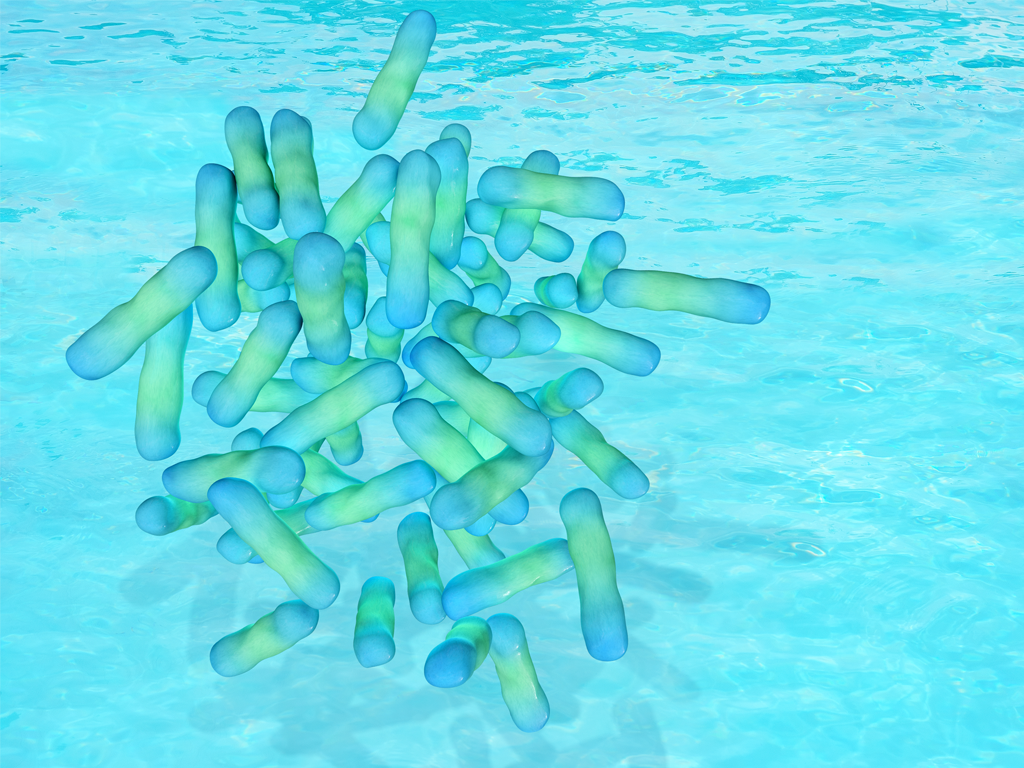It is a known fact that bacteria are everywhere. Bacteria can thrive in a variety of diverse conditions, which can explain why bacteria can be found across the globe. While bacteria are resilient, certain conditions are more conducive to growth than others: warm temperatures, pH levels, oxygen presence, and high moisture. Therefore, it should be no surprise that on average 7.2 million Americans fall sick each year from waterborne diseases. One waterborne bacterium that has seen a rise in cases since 2000 is Legionella.
Legionella’s Impact
First discovered after an outbreak in 1976, Legionella is a bacterium found naturally in freshwater environments – usually lakes and streams. This bacterium only becomes a health concern when it populates in man-made water systems: showerheads, sink faucets, cooling towers, hot tubs, decorative fountains and water features, hot water tanks and heaters, and large plumbing systems. Exposure to Legionella can cause health implications including two infections with varying degrees of danger.
The two infections associated with Legionella are Legionnaires’ disease and Pontiac fever. A group of individuals who had attended the 1976 Philadelphia convention of the American Legion experienced a severe case of pneumonia, a lung-infection that would later be coined as Legionnaires’ disease, after being exposed to Legionella. Pontiac fever is milder compared to Legionnaires’ disease and usually gets better without medical intervention. While Pontiac fever was discovered in 1968, it wasn’t associated with Legionella until the bacteria was discovered.
Growth and Spread of Legionella
Understanding Legionella is key to reducing growth and spread. Legionella needs water to reproduce and spread. In fact, the bacteria rely on contaminated water droplets that become aerosolized for transmission and spread. Inhalation of water containing bacteria is how people become infected with either Legionnaires’ disease or Pontiac fever. Aspirating on contaminated water can also lead to a Legionella infection, but this is less common and mostly impacts people with difficulties swallowing. Although it is exceedingly rare, direct spread between individuals has also been observed.
Risk Factors
As we have seen with other infections, most healthy people are unlikely to get sick or experience symptoms when exposed to Legionella as their immune system can fend off the bacteria. However, individuals who are older than 50 or have a weakened immune system (whether naturally or caused by medicine) are likely to experience an increased risk of contracting Legionnaires’ disease or Pontiac fever. People who are more likely to fall sick after exposure to Legionella include smokers, individuals with chronic lung disease, cancer patients, and individuals with underlying illnesses including diabetes, kidney failure, or liver failure. Those who contract Legionnaires’ disease from a hospital stay face an increased 25% risk of death compared to a healthy individual without preexisting conditions.
Symptoms and Treatment
Legionnaires’ disease being a lung infection means one can expect to see symptoms similar to flu or COVID-19 such as shortness of breath, coughing, fever, muscle ache, and headaches. Other less common symptoms experienced are diarrhea, nausea, and confusion. It can take anywhere from 2 to 14 days for symptoms to appear after initial exposure. Symptoms for Pontiac fever, on the other hand, usually begin a few hours to three days after exposure and include fever and muscle ache. The main difference between the two infections is that Pontiac fever patients do not experience the severe pneumonia that accompanies Legionnaires’ disease.
“Early diagnosis is key to effectively treating Legionnaires’ disease,” said New Jersey Acting Health Commissioner.
After known exposure to Legionella, it is important to get tested for both Legionnaires’ disease and Pontiac fever as their courses of treatment depend heavily on early detection for best results. Individuals with Pontiac fever tend to get better without medical intervention as the disease goes away naturally; however, this is not the case for Legionnaires’ disease. Patients with Legionnaire’s disease require antibiotic treatment with hospitalization until the infection has left their system. Without treatment the infection can lead to lung failure and even death. In fact, 1 out of 10 patients will die from complications from Legionnaires’ disease.
Preventative Methods
There are no medical preventatives or vaccines that can protect individuals from the impacts of exposure to Legionella.
According to the CDC:
“The key to preventing Legionnaires’ disease is to reduce the risk of Legionella growth and spread.”
Maintaining building water systems and introducing controls to reduce the growth of Legionella is one way that facilities managers and building owners can proactively act to reduce the risk of exposure for occupants. However, when it comes to reducing bacteria growth the best course of action is to address the root of the issue – bacteria.
How do you reduce the growth and presence of bacteria? Harsh chemicals are one option, but these chemicals don’t always work and can even be harmful to individuals – especially those with Multiple Chemical Sensitivity. Instead of exposing yourself to harmful cleaning chemicals, try an air purifier Powered by ActivePure® Technology. Proven effective in reducing up to 99.9% of pathogens including C. diff, MRSA, and Legionella. ActivePure devices can reduce the presence of contaminants in the air and on surfaces. Lower the risk of exposure to Legionella with ActivePure. For more information on how ActivePure can help you protect your space from becoming a hotspot for bacteria and other pathogens visit the link below.



